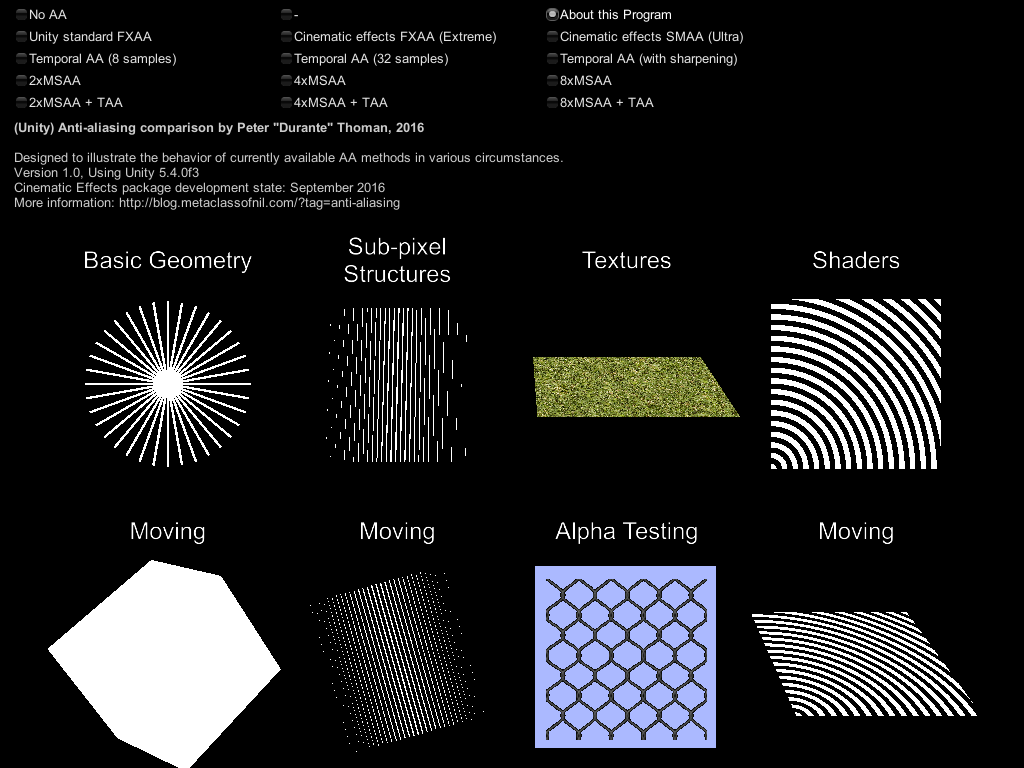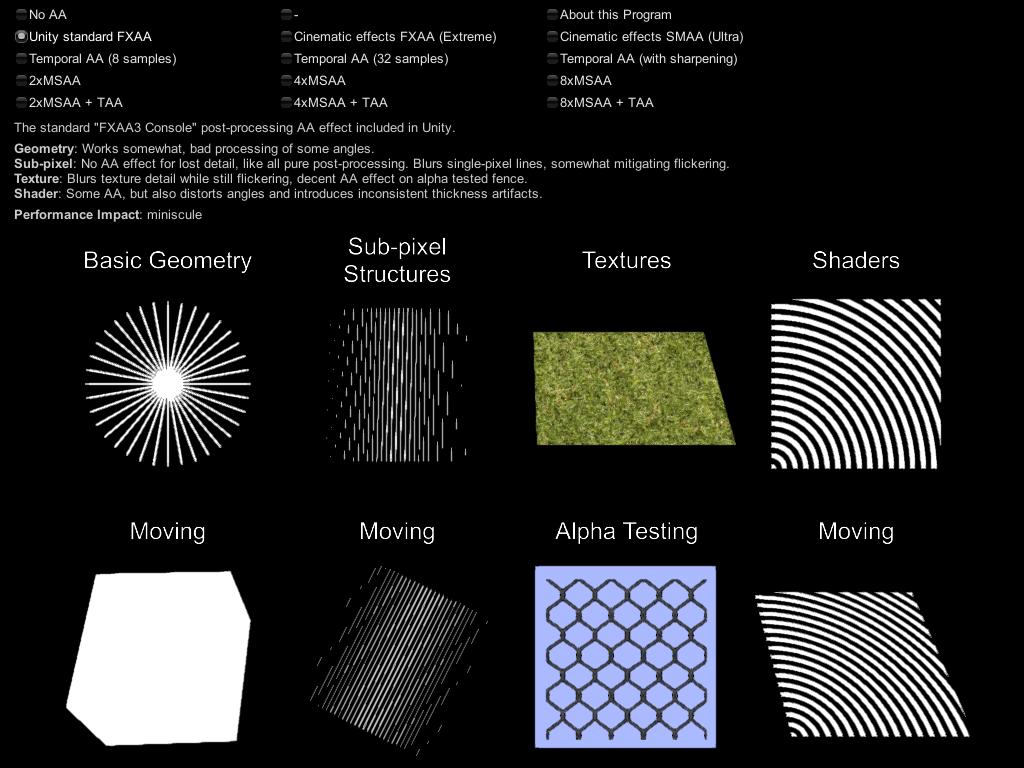3 years or so back, I wrote a tool to compare anti-aliasing methods. It was designed to accompany my Beyond3D article on the topic.
The tool is still useful, but it has a few issues:
- It’s based on raw OpenGL code, which means that it’s hard to extend, and somewhat likely to break on driver updates.
- For the same reason, it’s slightly more difficult to ship without dependencies.
- It doesn’t offer any temporal anti-aliasing technology, which is currently where much of the most interesting research is happening.
- Its user interface is terrible, and it doesn’t guide people in any way in terms of interpreting what they see.
To solve these issues, I implemented a very similar tool in Unity.
It features a whole lot of information about the various AA types it supports in tool-tips, and also includes the currently-in-development Unity temporal anti aliasing.


 If anyone is interested in the sources I can release them, it’s pretty basic and mostly boring UI stuff.
If anyone is interested in the sources I can release them, it’s pretty basic and mostly boring UI stuff.
